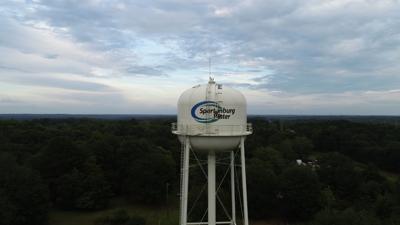SPARTANBURG — Meeting new federal rules for drinking water is expected to cost the Charleston Water System at least $130 million and could cost water systems across the nation $1.5 billion annually.
The new rules from the U.S. Environmental Protection Agency set limits for six kinds of manufactured perfluoroalkyl and polyfluoroalkyl substances, also known as PFAS or “forever chemicals,” that might be found in drinking water.
Exposure to PFAS has been linked to several health concerns, including deadly cancers, developmental damage to children and heart and liver problems. The EPA estimates the new rules will save $1.5 billion annually from reduced birth problems, fewer heart issues and lower cancer rates.
So how will they impact Spartanburg? It depends on where you live.
A 2020 report from the South Carolina Department of Health and Environmental Control indicates most of the county's water utilities will likely meet the guidelines as their water sources don't have a discernible amount of the chemicals. The one exception was the Woodruff-Roebuck Water District, which serves around 26,000 customers.
The source for its drinking water contained levels of pollutants that exceeded the limits, which are set at 4 parts per trillion, for some of the most common PFAS categories.
The level of the compound PFOA, a human carcinogen, in the district's water was 5.9-6 ppt. The level of PFOS, another possible carcinogen, was 5.7-7.9 ppt.
Kermit Johnson, general manager of the water system, said it does not test for PFAS and does not have updated data.
He said he did not know how much it would cost to follow the new rules but is working to learn more to prepare for when the rules go into effect.
The water system will have to follow them regardless once enforcement starts in five years, Johnson said.
"If we need to get it out, we’ll get it out,” he said.
While enforcement starts in 2029, public water systems must tell the public the levels of the pollutants in their drinking water by 2027. The EPA also set limits of 10 ppt for three other PFAS contaminant categories that might be found in drinking water.
Johnson stressed that the water system did not put the chemicals in the water.
The county's largest provider, Spartanburg Water System, credited its ability to meet the guidelines on its water sources, which are free of the chemicals.
"We are very lucky to not be as impacted by the new ruling,” said Jennifer Candler, Spartanburg Water’s spokesperson.
The system, which serves around 176,000 customers, began testing for PFAS in 2020.
"97 percent of all tests conducted have produced results indicating no detection was found to less than 1 ppt and 100 percent of all tests that were conducted showed less than 1.3 ppt,” said Guy Boyle, Spartanburg Water’s CEO, in a press release.
Water is not the only way to be exposed to PFAS. They have been used in countless everyday objects such as food packaging, non-stick pans and water-resistant clothing.
PFAS are synthetic chemicals with unique physical and chemical properties such as resistance to high and low temperatures and degradation. PFAS also have non-stick characteristics and have been manufactured and used by a variety of industries since the 1940s.










